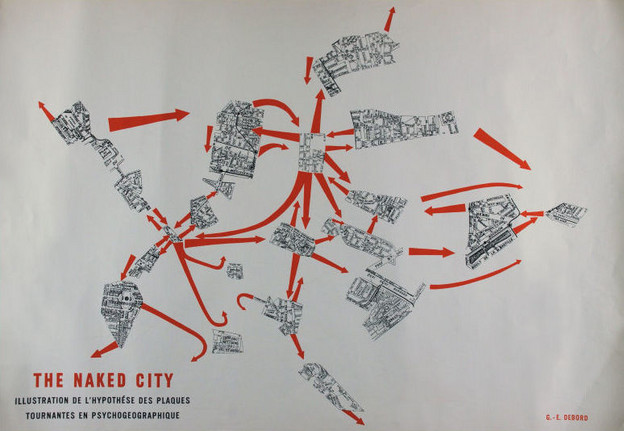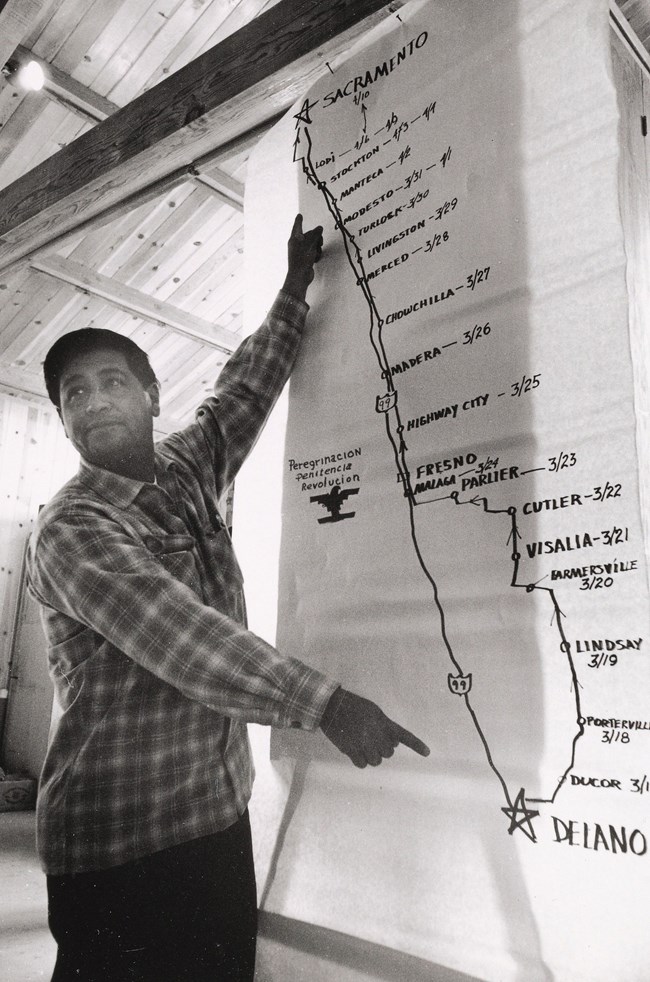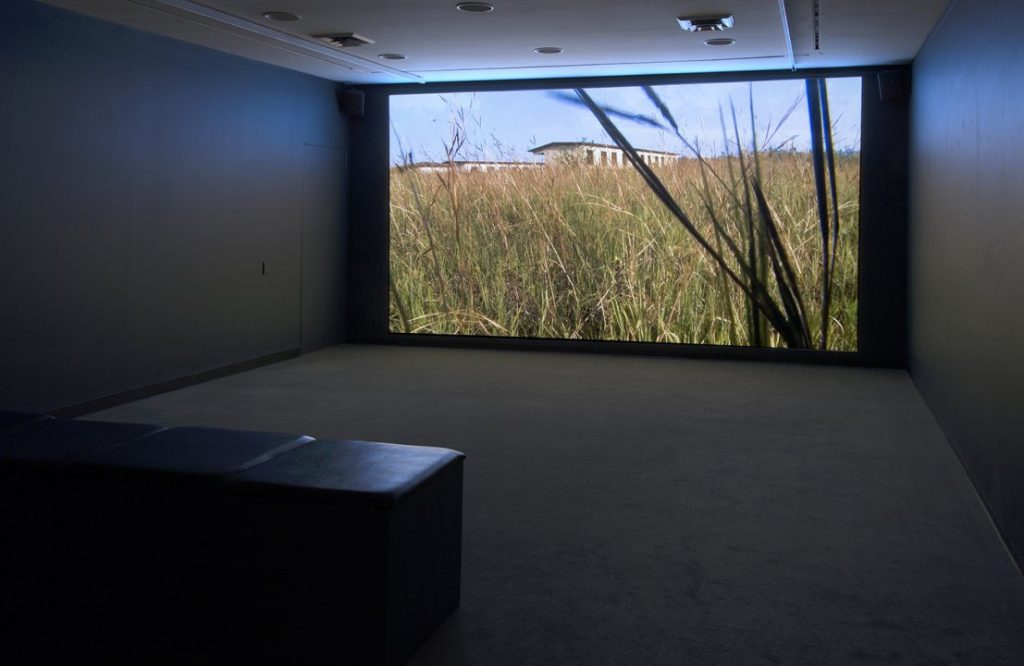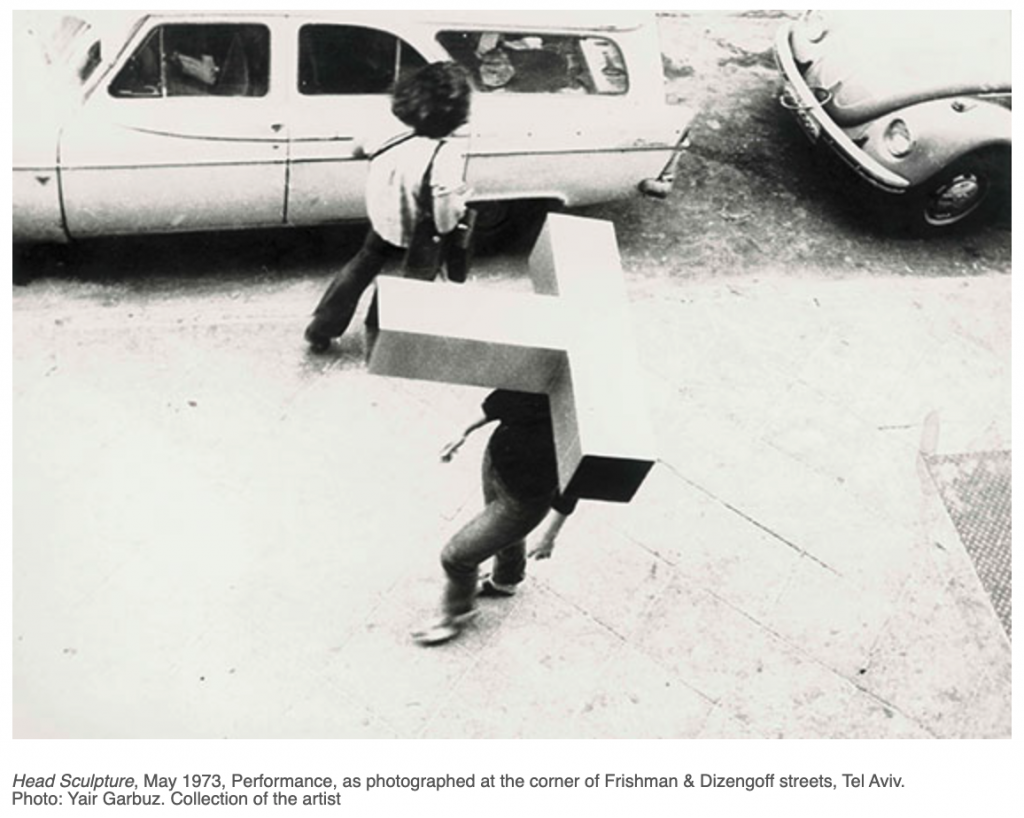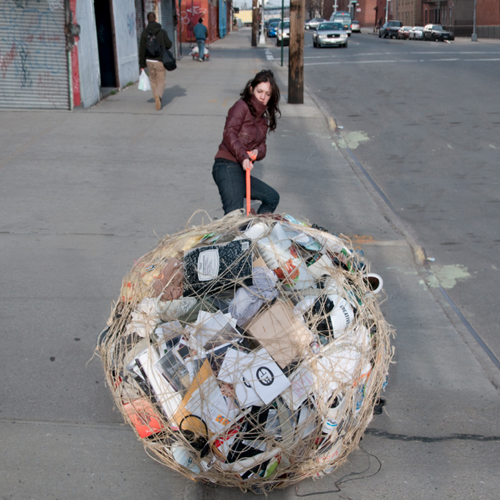
Carey Young
“Carey Young‘s series ‘Body Techniques‘ recreates several works from the canon of performance art from the late 1960s and early 1970s, including pieces by Richard Long, Bruce Nauman, Dennis Oppenheim, and Valie Export. Many of these earlier-generation artists undertook their projects by walking into a public space to create a kind of experiment (or, in Nauman’s case, conducting an experiment by walking around the space of his studio).
Long’s ‘Line in Ireland’ offers the viewer a point of entry into a quintessentially romantic wilderness, free of people. The art of the late 1960s often negated the idea of the art object as a luxury commodity by focusing on performance or the artist’s own body, on process rather than product, or on using natural or basic materials. Carey’s image inverts such binary terms, with some ironies.
Her work, like Long’s, shows a place that seems uninhabited. Yet Young’s work also inverts the attitudes associating walking with unfettered liberty, heroic (male) creativity and boundless natural landscapes. She suggests that such concepts are escapist fictions: her uniform of a business suit implies that the world we live in is one where art, money, and big business are more entangled than ever. Creativity and capital are unavoidably intertwined, rather than separable: we cannot ‘walk out’ of either. In her work, no space – conceptual or physical – escapes the process of commodification. ‘Body Techniques’ is accordingly set in Dubai: a place seemingly emblematic of twenty-first century capitalism where almost nobody travels by foot. The gargantuan tower blocks in the background, created with petro-dollars, ensure that walking, and the pleasures and chance encounters of perambulation, have been abolished.” [credit]
“Body Techniques (2007) is a series of eight photographs that considers the interrelationships between art and globalized commerce. The title of the series refers to a phrase originally coined by Marcel Mauss and developed by Pierre Bourdieu as habitus, which describes how an operational context or behavior can be affected by institutions or ideologies.
Set in the vast building sites of Dubai and Sharjah’s futuristic corporate landscape, we see Carey Young alone and dressed in a suit, her actions reworking some of the classic performance-based works associated with Conceptual art, including pieces by Richard Long, Bruce Nauman, Mierle Laderman Ukeles, Dennis Oppenheim and Valie Export. In thus recasting earlier works centered around the physicality of the body in time and space, it is ambiguous whether the artist is molding herself to the landscape or exploring ways of resisting it.
The locations for Young’s photographs are a series of empty, uninhabited ‘new build’ developments reminiscent of Las Vegas, rising from the desert’s tabula rasa aimed at bombastic luxury and spectacle and intended for thousands of incoming Western corporate executives. The architectural style is consummate ‘global village’ – a business theme park composed of swathes of multinational HQs and Italianate McVillas. These non-places could eventually compose an entire world-view: a hyperreal, corporate vision of utopia. Half-constructed backdrops are used as a ‘stage’ for the action, with the artist appearing as one tiny individual, overwhelmed, dislocated from, or even belittled by the corporate surroundings, while dressed up to play a role within it.” [credit]
